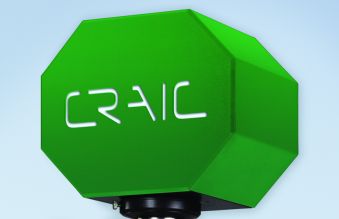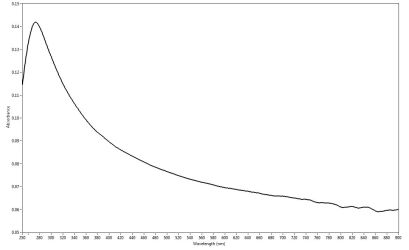Microspectroscopy of Carbon Nanotubes

Microspectrophotometers are used to analyze carbon nanotubes and CNT based devices |
Typical test spectra of a carbon sheet |
|
| ⇐ | Learn more here on how carbon nanotubes and their optical effects are studied with a microspectrophotometer. | |
| The carbon nanotube (CNT) is carbon with a cylindrical nanostructure. Carbon nanotubes are long, hollow structures with the walls formed by one-atom-thick sheets of graphene - a two dimensional form of carbon. These sheets are rolled under specific conditions and the combination of the rolling angle and radius decides the nanotube properties. Additionally, carbon nanotubes naturally align themselves into "ropes" held together by van der Waals forces. CNT molecules have unique properties, which may be useful for for optics, electronics, nanotechnology and material science. | Mapping the spectral characteristics of CNT and CNT bundles with microscopic spatial resolution can easily be done with microspectrophotometers. Microspectrophotometers are also useful when only microscopic amounts of CNT materials are available for analysis. And because CNT has many novel optical, electronic and phsyical properties, it will see use in new electronic devices such as those well suited for analysis with microspectrophotometers. With such devices, microspectrophotometers can give information about the thickness of thin films of carbon nanotubes, their optical and electronic attributes, as well as the vibration level characteristics using Raman microspectroscopy. | |
| To learn more about microspectroscopy and carbon nanotubes analysis and testing, select one of the following links: |
What is a Microspectrophotometer? |



